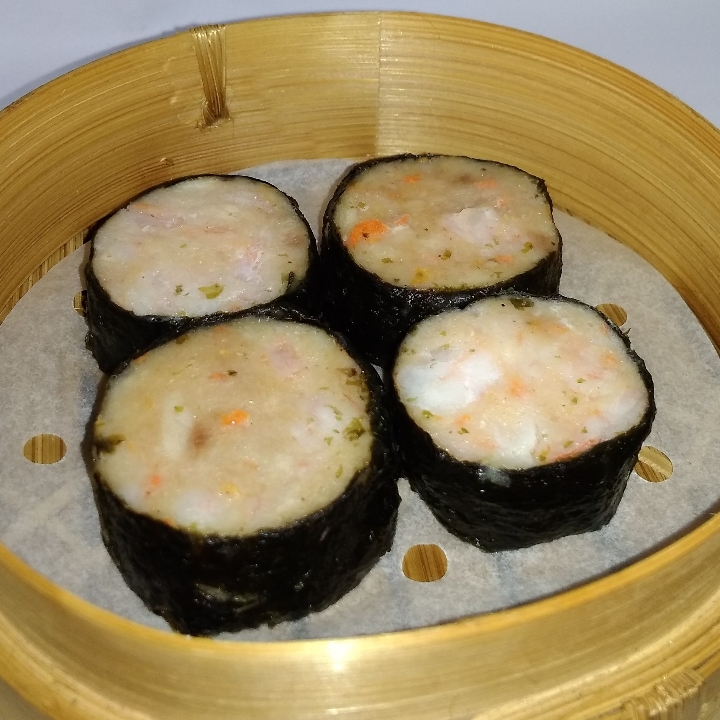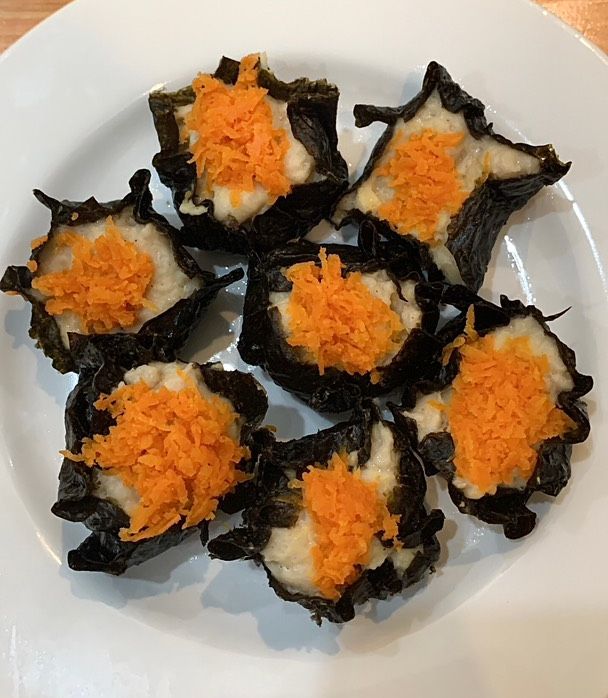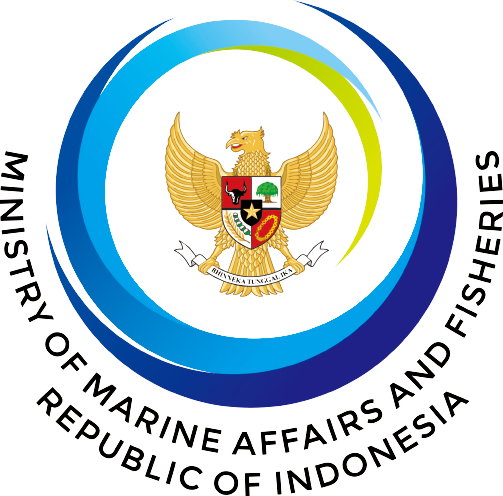
Oceans of Opportunity: How Seaweed Can Help Fight Climate Change
It’s a nutritional food source, an alternative to plastic, has medicinal properties and can help to limit global heating: Marine algae might just be the next weapon in the fight against climate change.
From February 9 to 11, the French town of Brest is hosting the One Ocean Summit, the first international summit dedicated to protecting the world’s oceans. NGOs, scientists, business leaders and heads of state will meet in the Breton town to discuss how to protect marine ecosystems and promote sustainability.
Philippe Potin, a marine biologist and researcher at the French National Centre for Scientific Research, and Vincent Doumeizel, a senior advisor and food expert for the United Nations Global Compact, speak to FRANCE 24 about what’s at stake at the summit.
There’s one point on which they are unanimous. “We have to invest in marine algae!” they say.
“Often, when we talk about algae, it conjures up this negative image of piles of green or brown slime washed up on beaches in Brittany or the Caribbean. It’s a real shame,” says Potin. “When seaweed ends up on beaches, it’s because it’s been dragged up from the seabed by pollution or industrial activity. It’s not the problem, it’s a consequence.”
"The reality is that these plants play a vital role for our planet,” Potin continues. Seaweed is to marine environments what forests are to the land. “They’re also the lungs of the planet. Thanks to their photosynthesizing, they absorb CO2 and emit oxygen,” he explains. “Alone, they are responsible for half of all of Earth’s renewal of oxygen. They are hugely helpful for the climate.”
"They are also indispensable to ocean life because they help to create habitats for thousands of different types of fish and shellfish. There’s then a knock-on effect, because it’s in part thanks to algae that we have such a variety of fishing stock on the coasts.”
In total, some 10,000 species of algae visible to the naked eye grow across the planet – from sea lettuce in Brittany to Tasmanian kelp and wakame in Japan.
‘The world’s most under-used resource’. On top of the role seaweed plays for the climate and biodiversity, it can also be useful across a number of other sectors, like food, industry and even medicine.
“It’s one of the world’s most under-used resources,” says Doumeizel. “Our planet is made up of 70 percent water and yet the seas and oceans only account for three percent of our food supply. It’s absurd.”
He goes on, “We know that one of the biggest challenges we face this century is that we have reached our limit on land in terms of the food industry. We’re running out of land and intensive agriculture is particularly damaging for the planet … It’s clearly time to think of new ways of doing things.”
So could seaweed be the magic answer to these problems? It’s already a daily foodstuff in Asia and is recommended by dieticians, who say it’s packed full of fibre, protein and vitamins and is low in fat. According to a study carried out by Wageningen University and Research in the Netherlands, devoting just two percent of the world’s oceans to farming algae could produce enough protein to fulfil the needs of everyone on the planet.
It’s not just humans who stand to benefit. “We can also use it to feed animals, particularly cattle. It would help to improve their immune system,” says Doumeizel. In the agricultural sector, a number of French villages – mostly in Brittany – already use seaweed as fertiliser.
Seaweed is already starting to leave its mark in the medical sector, predominantly in antifungal creams or anti-inflammatory products. Fucales, a type of brown algae, are known for being able to ease heartburn. Recently, researchers registered a patent for a cream and a gel to treat acne made from a type of microalgae.
In the industrial sector, Europe already counts several companies using seaweed to manufacture biodegradable packaging as an alternative to plastic. "Other companies are planning on using it to make clothing. In the Netherlands, a start-up is even looking into producing sanitary products made from seaweed,” says Doumeizel.
One place where it’s actually hard to use algae is in the energy sector. Potin tells FRANCE 24, “For a while we thought about using seaweed to make a biofuel, but the sheer quantity needed to do it is just too much.”
Rest of the World Trailing Behind Asia. "In reality, none of this is anything new. Algae has been consumed for hundreds of years. Prehistoric people ate it, as well as indigenous people all over the world,” explains Doumeizel. “The practice simply disappeared almost everywhere during the Roman and Greek period, apart from in Asia.”
Nowadays, Asia is a pioneer in algaculture – the farming of algae – and is responsible for 99 percent of global production. In 2015, China was the world’s leading producer, with 13 million tonnes collected, followed by Indonesia with 9 million tonnes.
In Europe, France and Norway are the biggest producers in a sector that’s still in its infancy. According to a report by the European Commission on the ‘Blue Economy’, only 32 percent of algae in Europe comes from algae farms. The remaining 68 percent comes from wild farming, or harvesting the plants directly from their natural environment. “We’re still at the hunter-gatherer stage!” says Doumeizel wryly.
The global market is rapidly growing, however. According to the Food and Agriculture Organization of the United Nations, production tripled between 2000 and 2018. The report notes that algae accounts for the fastest-growing food sector in the world.
Finding a Balance Between Farming and Sustainability. Potin and Doumeizel are calling to accelerate research in algaculture. “Beyond its economic potential, it’s even more important because lots of alga species are disappearing, due to ocean heating and climate change,” explains Potin, drawing on the example of a forest of seaweed off the coast of California that has declined by 80 percent in the last few years. “Developing algaculture would allow us to restore ecosystems.”
“But of course, this has to be done carefully and with a lot of thought,” he adds. “We mustn’t damage our oceans even further by doing anything we can to grow algae.” In Asia, algaculture has already come up against limitations. Just as with intensive agriculture, algaculture is often blamed for taking up too much space. The use of fertiliser for accelerating production is also very common. “And often it’s monocultures that are grown, which effectively wipe out other species,” Potin notes with regret.
There’s an added challenge for algae farming in Europe. “Amongst the thousands of species of algae that exist, we are only able to farm about 10, and mostly Asian species. We have to do more research on European species. We want to avoid importing exotic algae that could disrupt ecosystems here,” emphasises Potin.
Potin and Doumeizel are part of the team behind the Safe Seaweed Coalition, a new organisation managed by the United Nations, the French National Centre for Scientific Research and the Lloyd’s Register Foundation. Its aim is to bring together businesses, scientists and farmers to set up international legislation for the seaweed industry.
At the One Ocean Summit, Doumeizel will be pushing algae’s many virtues in talks with Barbara Pompili, France’s minister of ecological transition. “France has huge potential. Brittany has a seaweed zone that’s unique in the world,” he says. “The government has to take advantage of it.”
Source: https://www.france24.com/en/europe/20220208-oceans-of-opportunity-how-seaweed-can-help-fight-climate-change












